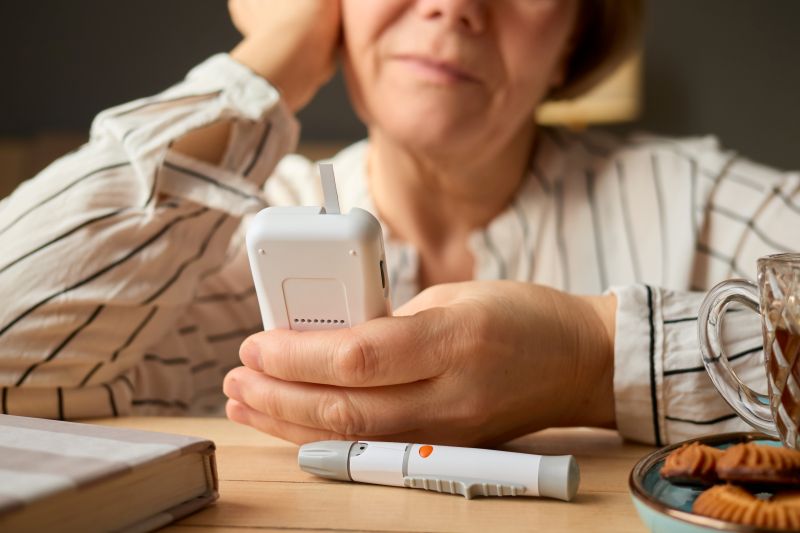
The Relationship Between Sexual Health Literacy and Sexual Function in Diabetic Women

Diabetes mellitus (DM) is a metabolic condition most known for the body’s inability to produce or utilize insulin properly. If not managed carefully and holistically, including during treatment and care visits, DM can lead to further complications, such as sexual dysfunction (SD), of which 20-80% of diabetic women experiences symptoms. Sexual dysfunction experienced by diabetic women may include genital arousal disorder (caused by chronic hyperglycemia) or low self-esteem related to the overall impact of diabetes that may negatively affect sexual functioning. It’s assumed that as DM progresses, risk of SD increases.
Sexual health literacy (SHL) is a level of competency related to someone’s knowledge, skills, and understanding related to sexual health. SHL allows people to make informed decisions about their reproductive healthcare and is imperative for helping mitigate SD and other sexual health-related complications.
Those with chronic illnesses are often at a higher risk of SD, yet these issues are not often discussed in diabetes-related healthcare conversations or routine care appointments. Women with higher SHL levels are often better equipped to accurately assess outside information regarding their SD and may have better access to the tools needed to address these concerns in healthcare settings, leading them to get the help they need.
In order to assess if there is a relationship between diabetic women’s SHL and SD and determine what factors may affect these levels, Turkish researchers surveyed 400 sexually active diabetic women with a median age of 53 years old. Between October 2023 and June 2024, this sample was interviewed face-to-face using a combination of data collection tools. Most importantly, researchers relied on the female sexual function index (FSFI), which is used to assess female sexual functioning over the preceding 4 weeks and focuses on desire, arousal, lubrication, satisfaction, and orgasm. They also used the sexual health literacy scale (SHLS), which measures sexual knowledge and sexual attitudes. Higher scores of each survey are equated to higher levels of SD and SHL, respectively. Demographics such as education level, income, relationship length, number of children, and partner information were also collected.
Generally speaking, the type of diabetes, treatment regimen, and overall health status influence women’s SHL levels and risk of SD. Those with DM type 2 presented higher SD than those with DM type 1. This is likely due to type 2 being diagnosed at a later age, or complications from taking oral antidiabetic medications in tandem with insulin injections. Additionally, older participants tended to have higher SD than younger participants, which could be due to menopausal changes in sexual functioning, as menopausal participants were 97.7% more likely to experience SD. Those with more children tended to have higher SD than those with fewer children, and those with longer durations of DM had higher levels of SD compared to those with shorter durations. However, those who had sexual intercourse more times per week experienced less SD than those who had less sexual intercourse in a week.
Education, income, relationship length, and partner equivalents also affect SD in diabetic women. Participants with partners who had higher education levels tended to have a better quality of sexual life, presumably because they receive more support from their partners. Additionally, higher levels of SHL (based on the SHLS) were associated with better responses to the FSFI portion of questions. Researchers assume that income and use of family planning are directly related to education levels. Those with higher income and higher SHL are more likely to know how to effectively use family planning tools, such as hormonal birth control or barrier methods like condoms. They state that those who are less worried about pregnancy are less likely to experience SD.
Conclusion
From the results, researchers suggest that SD in diabetic women is directly related to number of sexual encounters per week, menopausal status, and duration of DM. They also suggest that working diabetic women and women with higher education are less likely to experience SD and more likely to have higher SHL.
Researchers stress that healthcare professionals working with these women should utilize their roles as health educators to promote a healthy sex life. Knowing the demographic information of patients can assist healthcare providers with personalizing care to help improve SD and SHL. Despite the lack of generalizability and risk of unreliability due to self-reported data, this study provides insight into how patients and providers can work together to improve SD in diabetic women.
References:
- Çakmak, B., Abay, H., Doğanay, C. A., Çelik, N., Özel, Y., & Üstün, Y. (2025). The relationship between sexual health literacy and sexual function of women with diabetes mellitus: A cross-sectional study. The Journal of Sexual Medicine, 22(3), 416–423. https://doi.org/10.1093/jsxmed/qdae197



